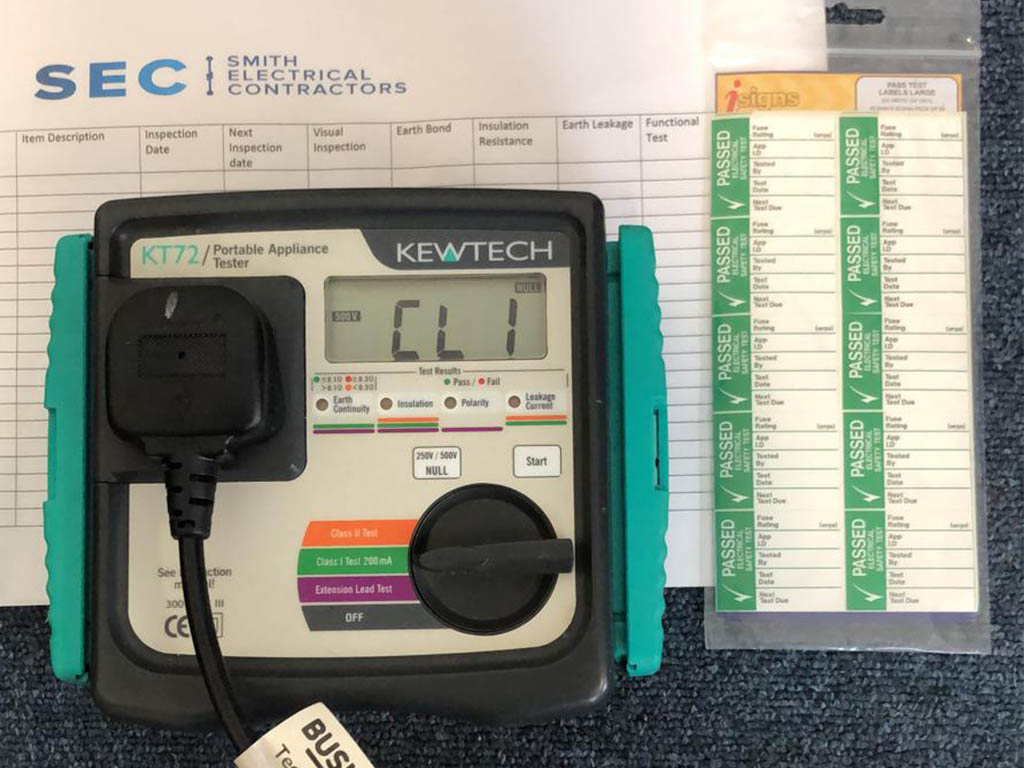

Portable Appliance Testing (PAT) is a crucial aspect of electrical safety in the United Kingdom. It plays a significant role in ensuring the safety of individuals and the protection of property by identifying potential electrical hazards in portable appliances.
PAT testing, or portable appliance testing, is a process of inspecting and testing electrical appliances to ensure they are safe for use. This procedure encompasses a range of activities, including visual inspections and electrical testing, to identify potential faults or defects in portable appliances. The primary objective of PAT testing is to prevent electrical accidents, fires, and injuries caused by faulty or unsafe appliances.
Legal Requirement:
One of the most significant reasons for the importance of PAT testing in the UK is that it is a legal requirement. The Electricity at Work Regulations 1989 stipulate that employers have a legal duty to ensure the safety of electrical equipment used in their workplaces. This duty includes conducting regular inspections and testing of portable appliances to prevent accidents. Non-compliance with these regulations can lead to legal consequences, including fines and imprisonment.
Workplace Safety:
Workplaces in the UK are filled with various electrical appliances, from computers and printers to kitchen appliances and power tools. Regular PAT testing ensures that these appliances are in safe working condition, reducing the risk of electrical accidents and fires. It protects employees, customers, and visitors from potential harm, making it an essential element of workplace safety.
Fire Prevention:
Faulty electrical appliances are a leading cause of electrical fires in the UK. PAT testing helps identify potential hazards such as damaged cords, loose connections, or overheating components, preventing these issues from escalating into full-blown fires. By conducting PAT testing, businesses and individuals contribute to fire prevention efforts, which is vital for public safety and property protection.
Liability Reduction:
Businesses that neglect PAT testing may face significant liability issues in case of accidents or injuries related to electrical equipment. By conducting regular testing and maintenance, organisations demonstrate their commitment to safety and can reduce their liability exposure in the event of legal claims.
Equipment Longevity:
PAT testing not only ensures safety but also prolongs the life of electrical appliances. Regular inspections can detect and address minor issues before they become major problems, extending the lifespan of expensive equipment and reducing the overall cost of ownership for businesses.
Compliance with Insurance Requirements:
Many insurance companies require businesses to perform regular PAT testing to maintain their coverage. Failing to meet these requirements could result in invalidated insurance policies, leaving businesses vulnerable to financial losses in the event of accidents or incidents related to electrical equipment.
The regulatory framework for PAT testing in the United Kingdom is well-established and provides clear guidelines for businesses and individuals to follow. Key aspects of this framework include:
The Electricity at Work Regulations 1989:
These regulations are a cornerstone of electrical safety in the UK. They place a legal duty on employers, employees, and self-employed individuals to ensure the safety of electrical systems and equipment. This includes conducting regular PAT testing to identify and rectify potential hazards.
Health and Safety at Work Act 1974:
The Health and Safety at Work Act 1974 sets out the general principles of workplace safety in the UK. It places a responsibility on employers to protect the health, safety, and welfare of their employees. PAT testing is considered an essential part of fulfilling this duty.
IET Wiring Regulations (BS 7671):
The IET Wiring Regulations, also known as BS 7671, provide detailed guidance on the design, installation, and maintenance of electrical systems. While not specific to PAT testing, compliance with these regulations is essential for ensuring electrical safety in general.
The Provision and Use of Work Equipment Regulations 1998 (PUWER):
PUWER regulations require employers to ensure that work equipment, including electrical appliances, is suitable for its intended use and is maintained in a safe condition. PAT testing helps ensure compliance with PUWER requirements.
The Management of Health and Safety at Work Regulations 1999:
These regulations require employers to conduct risk assessments and take measures to control workplace hazards, including electrical risks. Regular PAT testing is a key component of managing electrical risks.
PAT testing involves a systematic process of inspecting and testing electrical appliances to determine their safety. While the specific steps may vary slightly depending on the type of equipment and its usage, the general process typically includes the following:
Visual Inspection: The first step is a visual inspection, where the tester examines the appliance for any visible signs of damage or wear. This includes checking the power cord, plug, casing, and any exposed wiring.
Earth Continuity Test: The earth continuity test ensures that the appliance’s earth connection is intact. This is important for electrical appliances to safely dissipate any electrical faults.
Insulation Resistance Test: This test measures the resistance of the insulation between the live and earth conductors. It helps identify any issues with insulation that could lead to electrical leakage.
Polarity Check: The polarity check ensures that the live and neutral wires are correctly connected. Reversed polarity can lead to unsafe operation and potential shock hazards.
Load Test: Some appliances, especially those with variable heating elements or motors, may undergo a load test to cheque their performance under normal operating conditions.
Functional Testing: Functional testing verifies that the appliance operates as intended. For example, a kettle should boil water, and a vacuum cleaner should operate without any issues.
Documentation: After testing, the appliance is labelled with a pass or fail sticker, and the results are recorded in a log. This documentation provides a record of compliance with safety regulations.
The frequency of PAT testing depends on various factors, including the type of equipment, its usage, and the environment in which it is used. Generally, the following guidelines are followed:
It’s essential to conduct risk assessments to determine the appropriate testing frequency for each specific situation. Regular inspections and maintenance should also be performed between formal PAT testing intervals to ensure ongoing safety.
Portable Appliance Testing (PAT) is of paramount importance for safeguarding individuals, properties, and businesses from electrical hazards. It is not only a legal requirement but also a critical aspect of workplace safety, fire prevention, and liability reduction. The well-defined regulatory framework and testing procedures ensure that electrical appliances are regularly inspected, maintained, and tested to identify and rectify potential faults. By adhering to PAT testing guidelines, businesses and individuals contribute to a safer and more secure environment for all.
We operate in Stamford and the surrounding areas and will be more than happy to provide you with a quote for your PAT testing. Simply give us a call on 01780 238 445

